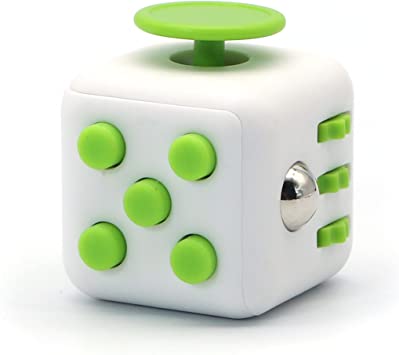Do Fidget Toys Work?

The Bottom Line: The short answer is … maybe. Fidget toys work for some people and not for others. The best way to find out if they are right for you or someone you know is to try them.
The short answer is ‘maybe’, and only temporarily. While these toys are designed to distract people from their ‘fidgety’ behaviors by giving them something else to do, and often claim to help alleviate the physical restlessness associated with anxiety or frustration, they are scientifically unproven as therapeutic devices.
Fidgeting consists of small movements that accompany restlessness. Restlessness is thought to be symptomatic of some sort of discomfort that is often associated with negative feelings, insecurities, and/or anxieties. It is also thought to accompany some attention disorders. In any case, fidgeting is believed to be a coping mechanism by the body to provide a physical outlet that helps people feel better, feel calmer, and/or focus more effectively.
Fidget toys come in a variety of shapes, sizes and materials. There are cubes, spinners, squeezable balls, playdough and ‘bubble wrap pops‘, to name just a few. Some are very simple and some are quite intricate in their design. Regardless of their look, they present as little toys and as relatively useless gadgets.
Nevertheless, fidget toys seem to have gained some credibility in recent years as outlets for restlessness and as providing alternative behaviors that help those who may feel insecure, frustrated, anxious, tense, or who just need some movement to feel better. However, while marketers claim fidget toys can reduce anxiety and/or improve concentration, no evidence has conclusively shown that these toys actually work, and certainly they don’t work for everyone.
That said, some of my observations and intuitions regarding fidget toys have been surprisingly positive. In my career as a psychologist, I have the opportunity to meet and work with people of all ages and in many life circumstances. In my therapeutic efforts, particularly with some children and teens, I have found that various devices that serve to distract as a result of their repetitive movements (e.g., spinners) and/or that necessitate repetitive muscle movement (e.g., squeezable balls or bubble wrap) help to calm them and to provide a focus that had a settling and comforting effect. This, in turn, has permitted opportunities for relatively focused therapeutic sessions that were productive, without the interference of negative feelings or distracting restlessness.
Of course, this wasn’t always the case and, in some instances, the fidget toy served to create a greater distraction.
So, the effectiveness of the fidgets, as with most things in life, seems to vary on an individual basis. Nonetheless, if it works for you or a member of your family to help alleviate insecurities, anxieties, frustrations, or other negative feelings and thoughts, even on a very temporary basis, it may be worth a try. Here are a few links to some of the fidgets sold on Amazon if you’re interested in having a look.
Click here for the link to the Amazon page with a lot of fidget toys
